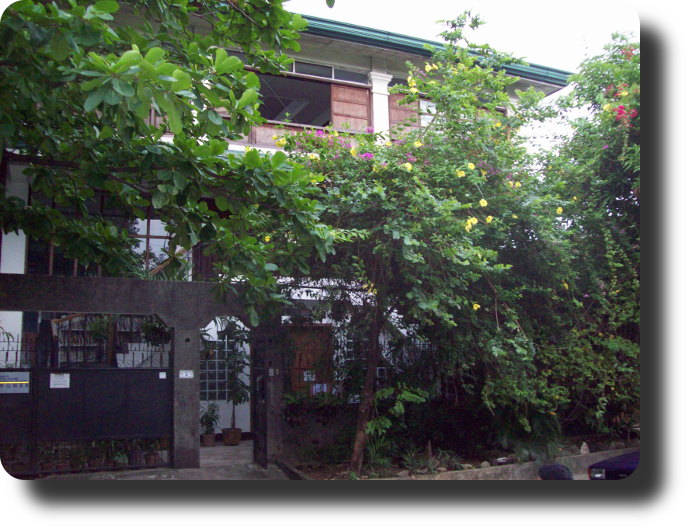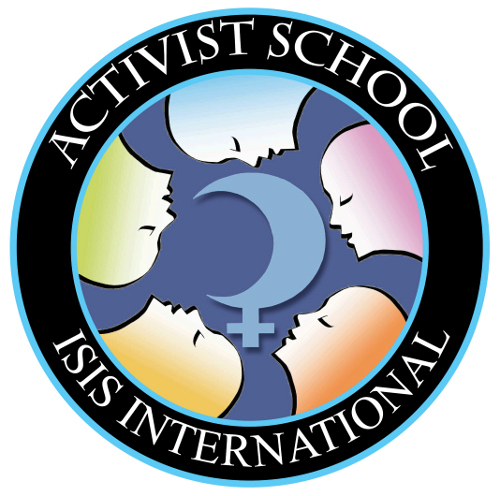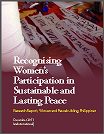Ma. Victoria Cabrera-Balleza
Manager, Media Information and Communications Services Programme
Isis International Manila
This email address is being protected from spambots. You need JavaScript enabled to view it.
This presentation is culled from a research project on the use of ICTs by women's organisations in Asia and the Pacific. Initiated by the Asian Women's Resource Exchange and coordinated by three organisations, namely Isis International-Manila, the Association for Progressive Communication-Women's Networking Support Programme, and the United Nations Economic and Social Commission for Asia and the Pacific, the research extended across seven countries in Asia-(India, Indonesia, Japan, Republic of Korea, Mongolia, Nepal and the Philippines); eight countries in the Caucasus and Central Asia-Armenia, Azerbajan, Georgia, Kazakhstan, Kyrgyzstan, Tajikistan, Turkmenistan, and Uzbekistan); and nine Pacific Island countries-Federated States of Micronesia, New Caledonia, Papua New Guinea, Samoa, Solomon Islands, Tonga, Vanuatu, and Fiji.
It must be noted that this presentation will only provide partial insights on the key ICT and gender issues in Asia and the Pacific. This and the study from which it is mainly sourced attempt to contribute to the efforts in identifying the ICT and gender issues in Asia and the Pacific which hopefully will lead t a better understanding of the relation between ICTs and women's empowerment.
The research was carried out by administering an electronic survey to women's groups in the countries included in the study. The baseline data were compiled by gathering information on socio-economic factors that impact on women's use of ICTs with specific focus on the current state of ICT infrastructure in the countries and the costs involved in access and connectivity.
It is universally acknowledged that the ICT sector is the fastest growing area in the global economy. However, while information and communication technologies became pervasive during the 1980s, the use of such technologies by women's organisations became noticeable after 1995. As in most world regions, the spread and growth of ICT usage has been uneven across Asia and the Pacific. Women and men in different countries in the region have not benefited equally. Women in particular have to contend with ideological, systemic, and institutional barriers to accessing ICTs.
The following findings highlight the current gender and ICT issues in the Asian and Pacific region:
Women's groups that have been able to tap into the potential of ICTs have experienced benefits and increased opportunities to:
- Conduct research and gain access to news and information
- Improve organisational and personal knowledge and skills
- Monitor and participate in global women's initiatives
- Disseminate information and publicise materials
- Lobby development causes at local and regional levels
- Exchange information and experience
- Coordinate activities both in-country and abroad
- Contribute to civil society and local communities
- Identify new contacts and development partners
- Apply for donor funding and other forms of technical support
The research also revealed that the dominant use of ICTs is e-mail which is primarily used for administrative purposes and for correspondence with donors and regional and international partners. The Internet, on the other hand was found to be useful for networking, information access and advocacy.
Along with the benefits and opportunities, the following barriers to Asia-Pacific women's use of and access to ICTs were identified:
- Lack of political, social and economic stability this was specifically cited in the Caucasus-Armenia, Azerbaijan and Georgia-and Central Asian subregion-that is evident in the high rates of inflation, ongoing armed conflict or other forms of civil unrest, large-scale natural disasters and high degree of centralised authority.
- Lack of national policies promoting ICT as a tool for development -that may be deduced from the poor ICT infrastructure such as inefficient telephone services or absence of electricity in some areas-many rural and remote areas in the Pacific and some parts of Asia still do not have electricity. The natural geographical features-such as vast expanse of land area, scattered islands, and difficult terrain have combined with the intrinsic urban bias in development denying the benefits of technology to a vast majority of women in countries like India, Nepal, Indonesia and the Philippines.
- Cost of computer hardware and software, and cost of maintenance and connectivity especially licensed software - The average monthly for an Internet account in the Pacific countries studied is US$50. On an annual basis, this amounts to one quarter to one half of the annual per capita GDP of many countries in the Pacific and is clearly unaffordable by the majority of its people. On the other hand, women's groups in East and South East Asia which already have access to the ICTs especially Internet and e-mail, attest that their communication costs have been reduced greatly because of the new technologies..
- Lack of or limited computer skills-on various areas including hardware and software installation and maintenance, Internet and non-internet based skills such as telnet, FTP, mailing lists-some Pacific women actually expressed discomfort with the technologies. Respondents from the Women's Action for Change, a women's NGO in Fiji said that they much prefer using fax or telephone. Still, other groups in the Pacific stressed that personal contacts and community meetings are still the most effective methods of communication in networking with other women's organisations.
- Limited awareness of the full range of opportunities afforded by ICT other than access to information
- Limited online information in languages other than English-English is not the first nor the second language in many Asia-Pacific countries and for any communication strategy to be effective, one of the primary concerns that it needs to address is language. Russian would have been more effective in Caucasus and the Central Asian subregion, Chinese in China, Hong Kong and Taiwan or Bahasa in Malaysia and Indonesia
The other key issues identified were:
- Leadership in the global information economy-currently, it is the US that is at the forefront-Southern countries, including Asian and Pacific countries remain at the periphery as suppliers of cheap raw materials -e.g. microchips-and markets for information products
- Quality of information posted on the web or circulated through other forms of ICTs -it is estimated that at least 70 of the information on the Net is pornographic; a good number of Asian and Pacific women have been traffic into prostitution through the Net
- Balance between the priorities placed on ensuring access to the web and developing websites versus facilitating e-mail access to isolated grassroots communities - Some NGO networks that have placed entire databases on the web have facilitated access to researchers in the US, Europe and other developed countries. While the same information remain inaccessible to non-networked local groups and to groups who cannot afford web access. A further danger is that NGOs could focus energy and efforts towards increasing the number of 'hits' registered on their sites and neglect their constituencies.
There have been several attempts to overcome the barriers to Asia-Pacific women's access to ICTs. Some of these are the: - Repackaging of Internet-accessed information and combining Internet technology with 'traditional' or more established tools of communication like radio and print
- Training and capacity building of women's NGOs and grassroots groups on various ICT skills - some examples are the Women's Electronic Networking Training (WENT) series by AWORC and Wired Fridays, a grassroots women's training project on ICTs by Isis International-Manila
- Facilitating content development on the web - production and use of ICT resources in different languages. Some examples are the AWORC multilingual database and the media productions of the women's media teams that were coordinated by Isis -Manila
- Networking and collaboration with other media organisations and media advocacy groups to enhance ICT accessibility through convergence of technologies such as radio and Internet
The research generated the following recommendations
- Ensure that gender is mainstreamed in ICT policies and programmes and that women are represented in the bodies that make decisions and policies
- Make the technology accessible, relevant and useful to Asia-Pacific women by developing holistic state policies on ICT that take women's needs and gender issues into consideration as well as address related issues such as the urban-rural bias.
- Promote the enrolment of girls in ICT programmes by providing incentives such as scholarships and awareness-raising activities
- Provide additional funding support to promote ICT use among women's groups in the Asia-Pacific region
- Conduct continuing training on the use of and the potentials of ICT which should also include the basic technical aspects such as simple data exchange, search, processing and storage
- Conduct awareness-raising workshops on the benefits of ICTs particularly as an effective means of communication
- Disseminate widely in both print and electronic formats results of researches on women and ICT-especially those that provide examples of successful use of ICTs by women's organisations .





 The
The 
 Isis Resource Center holds one of the largest feminist collections of materials in the Global South. With 40 years of publication experience, Isis holds a vast collection.
Isis Resource Center holds one of the largest feminist collections of materials in the Global South. With 40 years of publication experience, Isis holds a vast collection.